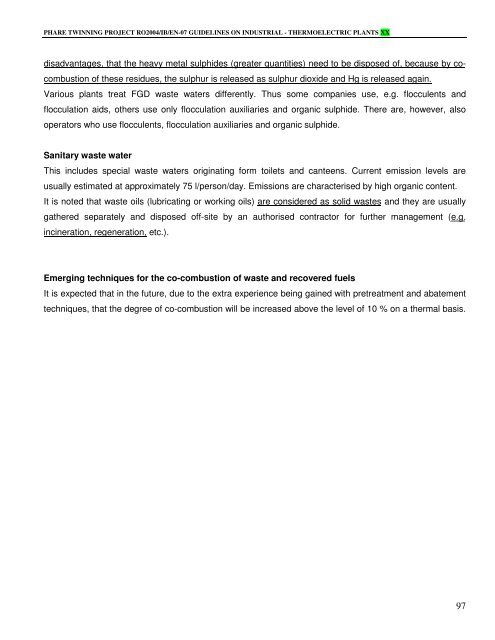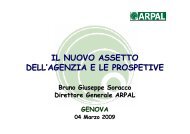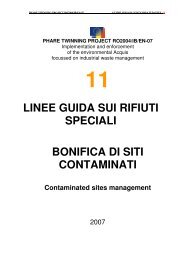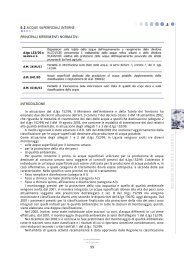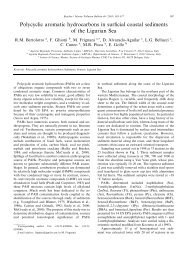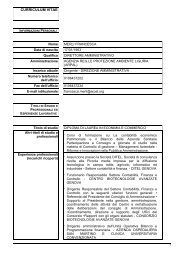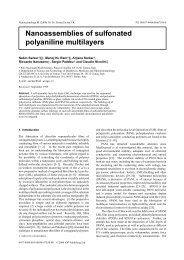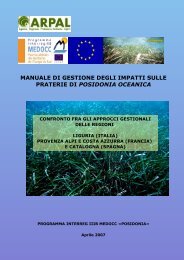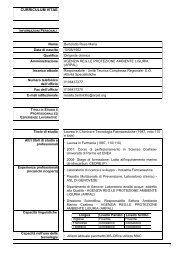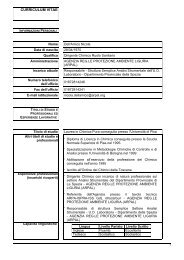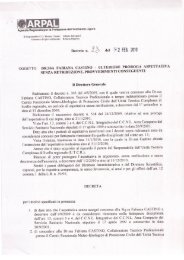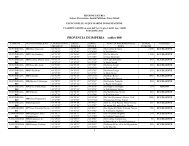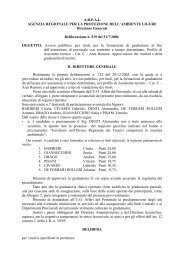Rifiuti da centrali termoelettriche - ARPAL
Rifiuti da centrali termoelettriche - ARPAL
Rifiuti da centrali termoelettriche - ARPAL
You also want an ePaper? Increase the reach of your titles
YUMPU automatically turns print PDFs into web optimized ePapers that Google loves.
PHARE TWINNING PROJECT RO2004/IB/EN-07 GUIDELINES ON INDUSTRIAL - THERMOELECTRIC PLANTS XX<br />
disadvantages, that the heavy metal sulphides (greater quantities) need to be disposed of, because by cocombustion<br />
of these residues, the sulphur is released as sulphur dioxide and Hg is released again.<br />
Various plants treat FGD waste waters differently. Thus some companies use, e.g. flocculents and<br />
flocculation aids, others use only flocculation auxiliaries and organic sulphide. There are, however, also<br />
operators who use flocculents, flocculation auxiliaries and organic sulphide.<br />
Sanitary waste water<br />
This includes special waste waters originating form toilets and canteens. Current emission levels are<br />
usually estimated at approximately 75 l/person/<strong>da</strong>y. Emissions are characterised by high organic content.<br />
It is noted that waste oils (lubricating or working oils) are considered as solid wastes and they are usually<br />
gathered separately and disposed off-site by an authorised contractor for further management (e.g.<br />
incineration, regeneration, etc.).<br />
Emerging techniques for the co-combustion of waste and recovered fuels<br />
It is expected that in the future, due to the extra experience being gained with pretreatment and abatement<br />
techniques, that the degree of co-combustion will be increased above the level of 10 % on a thermal basis.<br />
97


